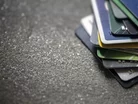The creation and evolution of credit card payments

The history of modern credit cards is a perfect example of a great idea that rapidly snowballed from its original conception.
Barely 12 years after it started as the local experiment of a New York bank, the credit card had become an international success story. Approximately 50 years after that, it had transcended being a physical item entirely.
Date: 1946
John Biggins invents the ‘Charg-It’ card
A Brooklyn-based banker named John Biggins laid the foundation for modern credit cards.
Available only to customers of Flatbush National Bank, the ‘Charg-It’ enabled the buyer to purchase items without paying for them immediately. Merchants would record sales and send deposit slips to the bank, which would then reimburse the merchant and bill the customer.
Date: 1950
Introduction of the Diner’s Club Card
The next innovation came courtesy of Diner’s Club founder Frank McNamara.
The Diner’s Club would bill its members on a monthly basis and then reimburse restaurants that had received their patronage. McNamara’s card employed a similar idea to Biggins’, but with a crucial difference: it was usable on a national scale.
Date: 1958
AmEx releases its first credit card
Perhaps the first incarnation of the credit card as it is recognised today, American Express represented another leap forward by introducing consumer credit that was available internationally.
By the late 50s, people were increasingly on-the-move and AmEx pioneered a product that combined the security of traveller’s cheques with credit’s flexible payment terms.
Date: 1979
Visa debuts POS terminals
Although credit was steadily becoming more accessible to consumers, processing times were still excessively long owing to pre-digital technology.
Visa changed that with the invention of electronic POS terminals. Although large and unwieldy in construction, these devices instigated a revolution in transaction speed that is still accelerating today.
Date: 2007
Barclaycard issues contactless payment cards
Bringing convenience a step into the future, Barclaycard’s contactless cards negated the need to input a PIN for each transaction.
The implications of this innovation are still being explored today. From apps to wristwatches, contactless payments have rapidly become a consumer favourite. The technology particularly realised its potential during the COVID-19 pandemic, which made minimising physical contact a priority.

